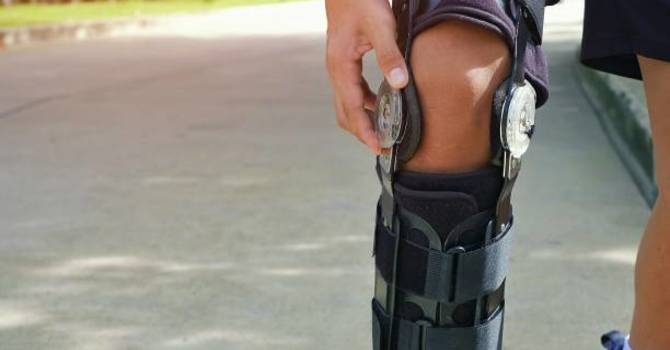
When it comes to alternative therapies, craniosacral therapy (CST) and Reiki are two popular methods that often come up in conversations about holistic health. Both aim to promote well-being and address various physical and emotional issues, but they approach healing in different ways. If you’re curious about how CST and Reiki stack up against each other, let’s break down their key features, similarities, and differences to help you decide which might be right for you.
What is Craniosacral Therapy (CST)?
The Basics of CST
Craniosacral therapy (CST) is a gentle, hands-on technique that focuses on the craniosacral system, which includes the membranes and cerebrospinal fluid surrounding the brain and spinal cord. Developed by Dr. William Sutherland in the early 20th century, CST involves light touch to assess and release restrictions in this system. The goal is to improve the flow of cerebrospinal fluid, reduce tension, and support the body’s natural healing processes.
How CST Works
During a CST session, the practitioner uses their hands to lightly touch different areas of the body, often focusing on the head, neck, and spine. They look for areas of tension or restriction and gently encourage the body to release these blockages. The therapy is designed to be deeply relaxing and can address a variety of issues, including chronic pain, stress, and emotional difficulties.
What is Reiki?
The Basics of Reiki
Reiki is a form of energy healing that originated in Japan. It was developed by Mikao Usui in the early 20th century. Reiki practitioners believe in a universal life force energy that flows through all living things. The therapy involves the practitioner using their hands to channel this energy to the recipient, aiming to balance and harmonize their energy field.
How Reiki Works
In a typical Reiki session, the recipient lies fully clothed while the practitioner lightly places their hands on or near the recipient’s body. The practitioner then channels Reiki energy to help release blockages and restore balance. The recipient may feel sensations such as warmth or tingling, and the session is generally very calming. Reiki is often used to promote relaxation, reduce stress, and support overall wellness.
CST vs Reiki: Key Differences
Approach and Techniques
CST:
- Focus: Targets the craniosacral system (brain, spinal cord, and cerebrospinal fluid).
- Technique: Uses light touch to assess and release physical restrictions and tension.
- Objective: Improve fluid flow, reduce tension, and support the body’s natural healing processes.
Reiki:
- Focus: Aims to balance the body’s energy field.
- Technique: Uses hands-on or hands-off techniques to channel universal life force energy.
- Objective: Restore balance to the energy field, promote relaxation, and support emotional and physical well-being.
Training and Certification
CST:
- Training: Practitioners typically undergo specialized training in craniosacral therapy, often through certification programs offered by professional organizations like the Upledger Institute.
- Certification: Certification can be obtained, and practitioners often have backgrounds in other bodywork or therapeutic disciplines.
Reiki:
- Training: Reiki practitioners are trained through a series of levels or degrees, starting with Reiki I and progressing to Reiki Master. Training is often provided by Reiki Masters or teachers.
- Certification: Certification is available but not always required. The emphasis is often on spiritual development and energy work.
Applications and Benefits
CST:
- Common Uses: Chronic pain, headaches, stress relief, post-surgical recovery, emotional release.
- Benefits: Promotes physical relaxation, improves fluid flow, supports nervous system health.
Reiki:
- Common Uses: Stress reduction, emotional healing, energy balancing, general wellness.
- Benefits: Enhances relaxation, promotes emotional balance, supports the body's natural healing processes.
Similarities Between CST and Reiki
Despite their differences, CST and Reiki share some common ground:
- Holistic Approach: Both therapies focus on treating the whole person rather than just specific symptoms. They aim to support overall well-being and balance.
- Relaxation: Both CST and Reiki are deeply relaxing practices that can help reduce stress and promote a sense of calm.
- Complementary Therapies: Both can be used alongside other treatments to enhance overall health and support the body’s natural healing processes.
Choosing Between CST and Reiki
If you’re trying to decide between craniosacral therapy and Reiki, consider the following:
- Personal Preferences: Reflect on whether you prefer a physical, hands-on approach (CST) or a more energy-focused method (Reiki).
- Specific Needs: Think about what you’re hoping to address. CST might be more suited for physical issues like chronic pain, while Reiki may be better for emotional balance and general wellness.
- Experience: It can be helpful to try both therapies and see which one resonates more with you. Many practitioners offer introductory sessions or consultations.
Conclusion
Craniosacral therapy and Reiki are both valuable therapeutic practices, each with its unique approach to promoting health and well-being. While CST focuses on the craniosacral system and uses gentle touch to address physical restrictions, Reiki works with energy to balance the body’s energy field. By understanding the differences and similarities between these therapies, you can make a more informed choice about which might be best for your individual needs. Whether you’re seeking relief from physical discomfort or aiming for emotional balance, both CST and Reiki offer paths to enhanced well-being.
Dr. Jace Sandell
Contact Me


